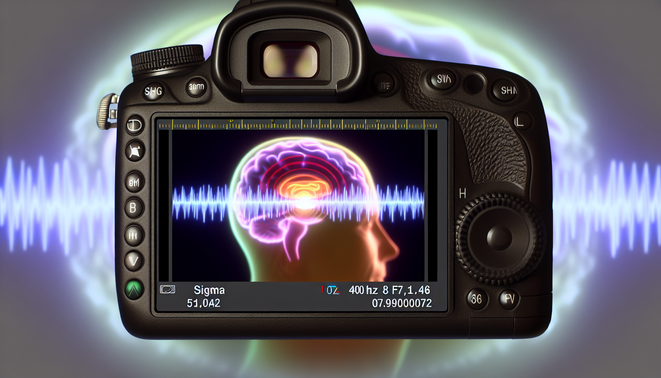“`html
Introduction to Gamma Waves
Gamma waves, defined as brainwave patterns oscillating between 30 to 100 Hz, are particularly significant at the 40 Hz frequency. This frequency has been linked to various cognitive functions, including attention, memory processing, and learning. Research indicates that gamma activity plays a crucial role in the synchronization of neural networks, facilitating communication across different brain regions, and enhancing perceptual awareness and cognitive performance [Source: Nature Neuroscience].
Studies have highlighted that 40 Hz gamma waves are essential for maintaining cognitive functions like focus and memory retrieval. Increased gamma wave activity at this frequency has been observed during moments of heightened awareness and during tasks requiring intense cognitive engagement. This suggests a facilitative role for gamma waves in supporting complex cognitive functions, likely through mechanisms involving the activation of neural circuits [Source: Frontiers in Neuroscience].
Additionally, gamma waves are believed to play a role in neuroplasticity, the brain’s ability to reorganize itself by forming new neural connections throughout life. This is especially pertinent in learning scenarios, where gamma oscillations can enhance synaptic plasticity, aiding memory formation and retention. The interaction between gamma wave activity and neuroplastic processes underscores the significance of these brainwaves in promoting cognitive flexibility and adaptive learning [Source: Neuroscience].
In sum, understanding the role of gamma waves, particularly at the 40 Hz frequency, is crucial for comprehending their impact on cognitive performance and the underlying neural mechanisms driving these processes.
The Science Behind Memory
Memory is a complex process involving various types of memory systems and the anatomical structures associated with them. Broadly, memory can be categorized into three types: sensory memory, short-term memory, and long-term memory.
Sensory Memory retains impressions of sensory information (like sights and sounds) for a brief period, typically less than a second. This initial processing stage allows for the immediate perception of stimuli.
Short-term Memory (STM), which can hold a limited amount of information (typically 7±2 items) for a short duration (around 20-30 seconds), acts as a buffer. It plays a critical role in our ability to process incoming information and transition it into long-term memory.
Long-term Memory (LTM) is where information is stored more permanently, with vast capacity and duration. It comprises explicit (declarative) memories, which we can consciously recall, and implicit (non-declarative) memories, which influence our behavior without conscious awareness. Explicit memory is further divided into episodic (personal experiences) and semantic (facts and knowledge) memories.
Neurologically, different brain structures are crucial for these memory types. The hippocampus is primarily involved in forming new memories and is essential for transferring information from short-term to long-term memory. The amygdala plays a significant role in emotional memories, while regions of the frontal cortex are involved in working memory and decision-making processes.
Research demonstrates that memory retention also depends on various psychological factors, such as the distinctiveness of the information, its emotional relevance, and the effectiveness of retrieval cues. For instance, studies indicate that high emotional significance can enhance memory retention through mechanisms involving neurotransmitters like dopamine, which modulates reinforcement during learning experiences [Source: Frontiers in Psychology].
Understanding these memory systems and the brain structures involved is key to unlocking strategies for enhancing memory, such as through neurofeedback programs like Genius Wave [Source: Genius Wave Review] and techniques that target specific brainwave frequencies.
Impact of Gamma Waves on Cognitive Function
Research indicates a strong correlation between gamma wave activity, particularly at the frequency of 40 Hz, and enhanced cognitive functions such as memory, attention, and overall cognitive performance. A study published in the journal “Nature” highlighted that participants exposed to 40 Hz gamma waves showed significant improvements in working memory tasks compared to those in control groups, suggesting that gamma oscillations play a crucial role in memory encoding and retrieval processes [Source: Nature].
Additionally, gamma waves have been linked to heightened attention and alertness, facilitating better information processing. Research has demonstrated that increased gamma activity correlates with the brain’s capacity to integrate information from different sources, leading to improved learning outcomes [Source: Frontiers in Human Neuroscience].
Furthermore, investigations into neurofeedback training using gamma wave modulation have revealed promising results in enhancing cognitive abilities. One study found that participants who trained their brains to produce more gamma activity demonstrated improved fluid intelligence and problem-solving skills [Source: Frontiers in Neuroscience].
For more insights into the benefits of brainwave frequency management, you can explore our article on the relationship between theta waves and memory enhancement here.
Practical Applications and Techniques
Incorporating 40 Hz gamma wave stimulation into daily life can be achieved through several compelling practices, enhancing memory and cognitive function. Here’s how to effectively integrate this frequency into your routines:
Meditation Practices
- Guided Meditation: Engage in guided meditation sessions specifically designed for gamma wave stimulation. Search for audio tracks that consistently use 40 Hz frequencies to help entrain your brainwaves. Meditation apps like Insight Timer frequently offer such resources.
- Binaural Beats: Listening to binaural beats with one ear receiving a frequency of 40 Hz, while the other receives a slightly different frequency, can facilitate gamma wave production. Studies suggest that this can enhance cognitive performance and memory retention (see Source: Genius Wave).
- Mindfulness Practice: Incorporating mindfulness meditation while focusing on breath awareness or body sensations can further help in achieving a gamma state. Aim for at least 10-15 minutes daily to cultivate a heightened awareness that has been linked to improved memory (see Source: Genius Wave Secrets).
Sound Therapy
- Sound Bath Sessions: Attend sound bath sessions utilizing instruments like crystal bowls tuned to 40 Hz. Sound therapy with these frequencies can stimulate brain activity related to memory and learning, facilitating cognitive enhancement.
- Music Therapy: Create playlists inclusive of music composed to produce gamma wave frequencies. Listening to such music while working or studying may help to improve focus and retention of information (see Source: Genius Wave Review).
- Nature Sounds: Incorporate recordings of nature sounds mixed with binaural beats at gamma frequencies. This can create a calming ambient background that supports cognitive tasks while producing a conducive environment for memory retention.
Daily Incorporation Techniques
- Mindful Transitions: Take mindful breaks throughout the day where you dedicate a few minutes to focus on your breath or listen to gamma wave soundtracks. This can reinvigorate your concentration and enhance learning.
- Exercise with Intention: Incorporate rhythmic physical activities, like dancing or yoga, coupled with 40 Hz music. This combination can enhance both physical and cognitive performance, as revealed in various neuroscience studies (see Source: Genius Wave vs Other Programs).
By weaving these practices into your daily life, you can effectively harness the benefits of 40 Hz gamma wave stimulation to boost your memory and cognitive functions.
Future Directions and Conclusion
Emerging research continues to illuminate the significant potential of gamma waves in enhancing cognitive functions, particularly in memory and learning processes. Recent studies indicate that gamma brainwave patterns, especially in the range of 30 to 100 Hz, are closely associated with cognitive performance, including memory recall and learning efficiency. For instance, researchers have established a correlation between synchronized gamma oscillations and the formation of new memories, suggesting that boosting gamma activity could facilitate improved memory encoding and retrieval processes [Source: NeuroImage].
Notably, gamma waves have been implicated in functions related to attention and perception. Innovative techniques, such as transcranial alternating current stimulation (tACS), are being explored to enhance gamma wave production, aiming to optimize cognitive functions in both healthy individuals and those with cognitive impairments [Source: Frontiers in Psychiatry]. Moreover, recent investigations detailed how enhancing gamma wave activity may also support neuroplasticity—the brain’s ability to reorganize itself—further underscoring its importance in learning environments.
Key takeaways regarding the benefits of gamma waves on memory improvement emphasize their role in facilitating faster cognitive processing, improving attention span, and enhancing overall mental clarity. Implementing strategies or technologies that boost gamma wave activity can potentially lead to significant improvements in learning outcomes and memory recall efficiency, making them appealing in educational and therapeutic applications. For further insights into brainwave enhancement techniques, consider exploring our article on the impact of theta waves on focus and memory [Source: Genius Wave Secrets].
In conclusion, as research progresses, the understanding of gamma waves in enhancing cognitive functions heralds new possibilities for memory improvement solutions and cognitive training programs. By harnessing the unique properties of gamma waves, individuals may achieve significant advances in their cognitive performance, creating a pathway for future innovations in mental health and educational strategies.
Sources
- Genius Wave Review – Genius Wave Review: Does Theta Audio Boost IQ?
- Genius Wave – Enhancing Cognition with NASA Research
- Genius Wave Secrets – Do Theta Waves Enhance Focus and Memory?
- Genius Wave vs Other Programs – Best Brainwave Programs
- Frontiers in Neuroscience – The Role of Gamma Waves in Cognitive Function
- Frontiers in Neuroscience – Neurofeedback Training for Cognitive Enhancement
- Frontiers in Psychiatry – Transcranial Alternating Current Stimulation for Cognitive Enhancement
- Frontiers in Psychology – Emotional Significance and Memory Retention
- Frontiers in Human Neuroscience – Gamma Wave Activity and Information Processing
- NeuroImage – Correlation Between Gamma Oscillations and Memory Formation
- Neuroscience – Gamma Waves and Neuroplasticity
- Nature – Impact of Gamma Waves on Memory Tasks
- Nature Neuroscience – Gamma Waves and Cognitive Performance
“`














